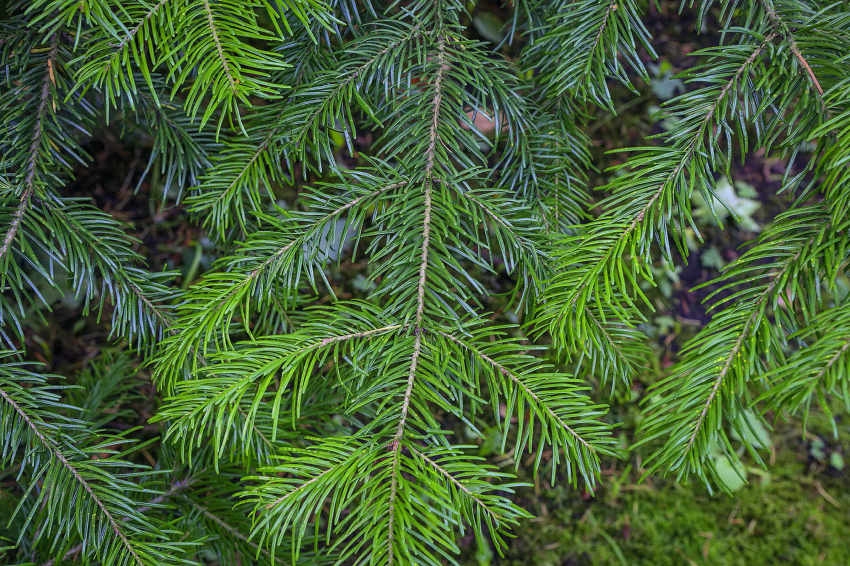KGZ21 Tyuz Key Biodiversity Area
Species that initiated the release of KBA [and other globally threatened species that are present in the KBAs but have not been confirmed to meet the global KBA criteria]: Draba alajica, Iskandera alaica, Littledalea alaica, Paraquilegia scabrifolia, Pulsatilla kostyczewii, Rindera alaica, [Betula tianschanica].

Draba (Krupka) Alai (Draba alajica)
Genus: Krupka family: Brassicas order: Caperaceae class: Dicotyledonous division: Flowering.
A numerous genus of annual and perennial herbaceous plants of the Brassicaceae family, numbering about 500 species.
Botanical description of the species:
Annual or perennial low cushion-shaped plants, pubescent with branched and stellate hairs, less often with simple or forked hairs. Life form of grass. Height 5-10 cm.
The leaves are simple, entire or multi-toothed, of two types - the lower rosettes with petioles and the upper stem ones - sessile. The leaf arrangement on the shoot is regular.
Flowers: actinomorphic perianth; number of petals 4. Flowers yellow or white, collected in dense racemose inflorescences, lengthening with fruit. Sepals erect or slightly deflected. Petals are obovate, with marigolds. Several species previously classified as a separate genus, Stonefly (Erophila), have bipartite petals. The ovary is sessile, with a short style, the stigma is bilobed.
Fruit: dry pod or bean; dry type. The fruits are two-locular (rarely four-locular) pods, flattened on the sides, of various shapes - elliptical, ovoid, lanceolate, round, linear, straight or twisted, flat or slightly swollen. The nests are polyspermous.
Distribution and ecology
The bulk of species grow in the subalpine and alpine zones of the mountains of Eurasia, America and in the Arctic tundra. Zoning Central Asia and Kazakhstan, Pamir and Pamir-Alai.
Interesting Facts:
It is believed that the plant gave its name to the city of Krupki, Minsk region in the Republic of Belarus, which is why the image of the Draba is on the local coat of arms.
Some species are decorative and introduced into culture. The cereals are very drought-resistant and light-loving, but in order to preserve the greenery after flowering, they need abundant watering. Suitable soils are loamy, sandy loam, rocky, containing humus and lime, and permeable. They reproduce by dividing the bush and by seeds.
Information sources :https://www.plantarium.ru/page/view/item/13466.html
https://openfito.ru/vids/vid/34509
https://www.inaturalist.org/taxa/55824-Draba
Photo source:https://plant.depo.msu.ru/open/public/item/MW0835016-1
Moscow State University named after M.V. Lomonosov. Seregin A. P. (ed.) Digital herbarium of Moscow State University

Iskandera alaica
Status: VU. A rare, narrowly endemic species. There is only one species of this genus in the republic.
Botanical description of the species:
Genus: Iskander < family: Brassicas < order: Caperaceae < class: Dicotyledonous < division: Flowering.
A perennial plant with lignified branched multi-headed caudexes, covered with the remains of old leaves, with leafless, bare stems up to 20 (50) cm in height. The whole plant is grayish from a dense cover of small, appressed branched hairs and scattered large capitate glands. Fruiting stems are thick, bare, 8 - 11 cm in height. The basal leaves are gray-green, entire, oblong-obovate. The perianth is violet-colored. Petals 20 - 25 mm long, purple. The pods are wide-linear, up to 6 cm long, 5-8 mm wide, flattened, with a fleshy stigma at the apex. There is no woolly pubescence on the stalks of the pods.
Features of biology. Blooms in VI; bears fruit in VII. Reproduction is by seed.
The distribution is general throughout the country. Kyrgyzstan: Alai Valley, slopes of Kyzyl-Eshme, river basin. Kashka-Suu.
Places of growth.Clay-limestone deposits in the middle and upper zone of the mountains. Number. Very insignificant.
Limiting factors.Unsystematic grazing of livestock and excessive load on pastures prevents the regeneration of plants.
Cultivation.No information.
Security measures exist.Listed in the Red Book of the Kirghiz SSR (1985).
Recommended security measures. Organize a botanical reserve in the river basin. Kashka-Suu, in the area of the highest concentration of populations of the species.
Information sources: https://openfito.ru/vids/vid/41985
https://open.kg/about-kyrgyzstan/nature/red-book/fungi-and-higher-plants/31762-iskandera-alayskaya-alay-iskanderasy-alai-iskandera.htm
Photo source: https://www.plantarium.ru/page/view/item/20922.html

Littledalea alaica
Genus: Littledaleia family: Bluegrass order: Bluegrass class: Monocots division: Flowering.
Zoning.Central Asia and Kazakhstan, Pamir and Pamir-Alai
Botanical description of the species:
Flowers: size up to 1 cm; perianth inconspicuous; inflorescence spike
External signs of leaves: linear shape; there is no division; attachment sessile, vaginal; smooth edge; leaves are simple; lanceolate shape.
Differences between the shoots: the leaf arrangement on the shoot is alternate.
Fruits: dry type; dry grain; color with shades of yellow.
Perennial. Stems are 15-25 cm tall. The leaves are bluish-green, smooth below, rough above, up to 0.3 cm wide, slightly curled. A plate at the base with linear curved ears. The uvula is densely hairy. The vaginas are pubescent. The panicle is compressed. Spikelets number 4-10, 5-11-flowered, about 3.5 cm long, variegated. Flowering in June-July.
Sources: https://openfito.ru/vids/vid/44290
https://openfito.ru/vids/vid/44290
http://www.agbina.com/1386/1387/569/109642
Photo source: https://plant.depo.msu.ru/open/public/item/MW0807528
Moscow State University named after M.V. Lomonosov. Seregin A.P. (ed.) Digital herbarium of Moscow State University

Paraquilegia scabrifolia
Ranunculaceae family.
False watershed (Parakilegia) is native to the high mountains of Asia from northeastern Iran to the Pamirs, Tien Shan mountains, Himalayas, Altai and mountains of western China. The genus is currently known to consist of 5, possibly 6 species. Parakilegia form loose or rather dense cushions with a short branching trunk, which gives rise to numerous short shoots, which with age become quite woody and densely covered with the remains of the hard petioles of previous years. These remaining petioles give sleeping pillows a spiky appearance and seem to both protect the pillows from intruders and also help prevent the pillows from falling apart.
Perennial plants forming dense turf. Leaves are alternate, 2-3-3-lobed, petiolate, glabrous or pubescent. Sepals: 5 in number, petal-shaped. The flowers are cup-shaped, solitary, on a thin stem with a small pair of narrow bracts in the middle or upper half. Nectary petals are sessile or almost sessile, round, rounded-elongated or tubular towards the base, often with a notch at the apex, concave at the base. the fruit is a small collection of pods, each of which splits to produce a number of seeds.
Information sources: http://www.agbina.com/1386/1388/574/109363
https://onlinelibrary.wiley.com/doi/10.1111/curt.12489
Photo source: https://www.plantarium.ru/page/image/id/688561.html

Pulsatilla kostyczewii
Genus: Lumbago family: Ranunculaceae order: Ranunculaceae class: Dicotyledonous division: Flowering.
Spreading: meadows, forests. Temperate zones of Eurasia and North America. Endemic to Central Asia (Pamir-Alai: foothills of the Trans-Alay range). Grows on rocks and rocky places.
Botanical description of the species:
Life form: grass, terrestrial, perennial, ephemeral.
Plant 12-20 cm tall.
The rhizome is very powerful, covered at the top with fibrous remains of dead leaves.
The root leaves are doubly trifoliate with entire, linear or two or three-separate segments, with entire and linear lobules, about 0.5 mm wide, covered, like the stems and petioles, with thick, soft, white hairs, appearing simultaneously with the flowers.
The leaflets are palmately multipartite into very narrow whole-edged or double-cut lobules. Peduncles are long, 6-10 cm long. The flowers are large, 5.5-6 cm in diameter, erect; tepals about 3 cm long and 2 cm wide, obovate, internal with rounded, external with an acute tip, pink, shaggy on the outside, remaining with the fruit. The stamens are half as long as the tepals; filaments purple; anthers ovate-heart-shaped, purple. Blooms in June.
Fruitlets with a long (4-5 cm long), flexible, feathery spine. Fruits in July.
Information sources:https://openfito.ru/vids/vid/51912
http://www.agbina.com/2372/2373/110891
Photo sources: https://www.plantarium.ru/page/view/item/30908.html
https://www.pavelkaalpines.cz/Photos/Garden2010/pulsatillakostyczewii.html
Rindera alaica
Rindera (lat. Rindēra) is a genus of flowering plants in the borage family (Boraginaceae).
Distribution area of the genus: Its native range is northwestern Africa (Algeria), southeastern and eastern Europe (Greece, Eastern Russia, Romania, Ukraine and Yugoslavia) to Western and Central Asia (Afghanistan, Altai, Bulgaria, Iran, Iraq , Kazakhstan, Kyrgyzstan). , Krasnoyarsk, Crimea, Lebanon-Syria, Mongolia, North Caucasus, southern European Russia, Tajikistan, Transcaucasia, Turkey, Turkmenistan, Uzbekistan) and Xinjiang (China).
Botanical description of the genus: Herbaceous plants. The leaves are simple, arranged alternately on the shoots. The flowers are actinomorphic, five-membered. The perianth is fused-petalous. The genus includes 30 species.
Interesting facts: The generic name Rindera is given in honor of Franz Andreas Rinder (1714–1772), a Russian physician of German origin from Orenburg and Moscow, who discovered this plant in the Ural Mountains.

Tianshan birch [Betula tianschanica]
Tien Shan birch (lat. Betula tianschanica) is a species of plants of the Birch genus (Betula) of the Birch family (Betulaceae).
Distribution and ecology
In nature, the species' range covers Central Asia - Kyrgyzstan, Tajikistan and China (Xinjiang Uygur Autonomous Region). Grows in the subalpine mountain belt. Blooms in May.
It lives scatteredly or in small groups on mountain slopes and river valleys, at altitudes of 1600-2200 m.
Botanical description of the species: Tree about 2 m high with pinkish bark. The leaves are ovate or narrowly ovate, almost diamond-oval, 4 cm long, 2.5 cm wide, pointed, with a broadly wedge-shaped base, glabrous, entire, coarsely irregularly serrate along the edge, on petioles 1 cm long.
Pistillate catkins are straight, 1.8 cm long, 0.7 cm in diameter, on slightly pubescent stalks 3-4 mm long. Bracts are about 5.5 mm long, only weakly ciliated along the edges, the middle lobe is linear, the lateral ones are ascending, rounded, much shorter than the middle one.
The nut is ovoid, 2 mm long, slightly pubescent at the base of the style. The wings are as wide as a nut or slightly narrower.
Growing in culture.It is found in cultivated plantings only in Almaty. It can be recommended for afforestation of mountain slopes in the fight against soil erosion.
A source of information:http://fungi.su/articles.php?article_id=1245
Photo source: https://www.plantarium.ru/page/image/id/685862.html










